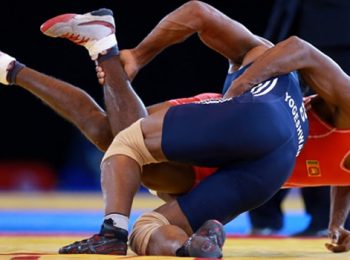Mike Tyson’s name isn’t just synonymous with knockouts, it represents a legacy of excess, spectacle, and unfiltered indulgence. From Bengal tigers roaming his yard to mansions decked out like royal palaces, Tyson didn’t just live large, he lived untouchably. His was a life that blurred the lines between fame, wealth, and chaos.
At the height of his powers, Tyson’s real estate portfolio was the stuff of legend. His 52-room mansion in Southington, Ohio wasn’t just big, it was absurd. A mirrored-ceiling jacuzzi, gold-plated furniture, and even a private nightclub? That wasn’t a house, it was a flex.
Not to mention the tiger cages out back, just to make sure no one forgot who ran the jungle. Later, he upgraded to a palatial Las Vegas estate covering more than 19,000 square feet, featuring six bedrooms, seven bathrooms, and two oversized garages built for his ever-growing luxury car collection. These homes weren’t just places to sleep—they were temples to Tyson’s status.
And then there were the pets. Tyson’s love for the exotic turned heads everywhere. He famously dropped over $70,000 on Bengal tigers, including Kenya, a 550-pound behemoth who wasn’t just a companion, she was part of Tyson’s mythology. Kenya became iconic, later appearing in The Hangover, and cost Tyson over $200,000 a year in trainers and upkeep. These weren’t just animals. They were symbols, living proof of his refusal to live a normal life.
Tyson’s fashion game punched just as hard as he did. Known for strutting in custom leather jackets, Versace prints, and diamond-dripping accessories, he could spend $240,000 a month on clothes without blinking. In one day alone, he blew $173,000 at a Las Vegas jewelry shop, Rolexes, rings, chains, the works. Everything about Tyson’s look screamed power, wealth, and unapologetic presence.
When it came to cars, Tyson didn’t drive, he collected. His garage housed a $500,000 Bentley Continental SC (only 73 in existence), alongside Ferraris, Lamborghinis, and Rolls-Royces. At one point, he owned over 100 luxury vehicles.
And if you were in his good graces? You might’ve gotten one too, like the time he gave away a $180,000 Bentley Azure to a total stranger in a nightclub. In 1995 alone, he spent more than $4.5 million on cars. For Tyson, money had to move, preferably at 200 mph.
His taste for thrills extended into casinos. Following his televised destruction of Reggie Gross at Madison Square Garden on June 13, 1986, a fight he ended with a right hook in just 2:36 of Round 1, Tyson cemented himself not just as a fighter, but as a fascination.
The win brought him to 23-0 with 21 KOs, and it ignited fan bases across the country, especially in Gross’s home state of Maryland. But just as important as the ring was the roar of high-stakes roulette wheels and the allure of private gaming rooms where Tyson’s bankroll spoke louder than his fists.
The Reggie Gross fight wasn’t just another win. It was a warning. Gross came in aggressive, swinging wildly, hoping to slow Tyson’s ascent. But “Iron Mike” dismantled him like a machine. He landed clean, moved with vicious intent, and knocked Gross into oblivion in just over two minutes. It wasn’t a fight, it was a message. Tyson wasn’t coming. He was already here.
Tyson’s income during his peak years eclipsed $400 million, with massive fight purses like $30 million vs. Evander Holyfield and $35 million vs. Lennox Lewis. But his spending outpaced even those wild earnings. He once admitted to blowing $125,000 a month on animal care, $100,000 on jewelry, $60,000 on cars, and $10,000 a week on chefs. His monthly burn rate reportedly topped $1.5 million.
By 2003, the dream cracked. Tyson filed for bankruptcy with $27 million in debt, despite hundreds of millions earned. His crash wasn’t just financial, it was mythic. The combination of impulse, bad advisors, unchecked generosity, and a bottomless appetite eventually became too much.
The entourage was both fuel and fire. Tyson often traveled with 50+ people: security, assistants, trainers, friends, freeloaders. He spent $500,000 a month on his inner circle, flying them first class, putting them in five-star hotels, and footing every tab.
His private jet cost nearly $18,000 an hour to operate, and spontaneous getaways were the norm. He once gifted a Rolls-Royce to a lifelong friend just for “always being there.” But when the money dried up, many disappeared just as fast as they had arrived.
Tyson’s generosity was notorious. A hotel clerk once complimented his Rolex, Tyson gave it to him on the spot. He bought Robin Givens a $2 million bathtub and gifted Bobby Brown a Bentley after a wild night out. For Tyson, gifts weren’t calculated, they were emotional. Sometimes he left clubs having handed out tens of thousands in jewelry or cash. It wasn’t marketing, it was Mike. Raw, real, unpredictable.
Today, Tyson is more than a former champ, he’s a cultural icon. His life story isn’t just about uppercuts and headlines. It’s about what happens when greatness meets excess, and nobody says no. His influence bleeds into music, fashion, cinema, and even casino culture. He showed the world what happens when fame is fueled by fire, and fortune is seen not as security—but as freedom.
Tyson lived like no one else. And whether in the ring or riding shotgun in a half-million-dollar Bentley, he never took his foot off the gas.



























